ROBBE Nine Eagles Solo Pro 137 BO 105 Military Operating Instructions Manual
- Category
- Toys & accessories
- Type
- Operating Instructions Manual
This manual is also suitable for

Operating Instructions
BO 105 Red Bull SR FTR RTF
2.4 GHz No. RB3501
Licensed by Red Bull
®
GmbH – Austria
Operating Instructions
Solo Pro 137 BO 105 Military
SR FTR RTF 2.4 GHz No. NE3526
V01/01/14

Operating Instructions - BO 105 SR FTR RTF 2.4 GHz
FUTABA Transmitter Ready
FUTABA Transmitter Ready, abbreviated to FTR, applies to various models from the Nine Eagles range. These models'
transmitter and receiver work with the FUTABA S-FHSS code, which means that they can also be controlled by FUTABA
transmitters which can be operated in S-FHSS mode.
At present these are the following transmitters:
T6J-R2006GS 2.4 GHz FHSS, No. F4100
T-8J-R2008SB 2.4 GHz FHSS/S-FHSS, No. F4108
T18MZ-R7008SB 2.4 GHz FASSTest M2, No. F8073
T18MZ-R7008SB 2.4 GHz FASSTest M1, No. F8073M1
T-14SG-R7008SB 2.4 GHz FASSTest M2, No. F8075
T14SG-R7008SB 2.4 GHz FASSTest M1, No. F8075M1
FX-32-R7008 2.4 GHz FASSTest, No. F8078
Using the S-FHSS General Link module
(Order No. NE480193)
If you intend to fly the model using a FUTABA transmitter without S-FHSS transmission system, or a different make of trans-
mitter, you will need the S-FHSS General Link module. Before using the General Link module it is essential to read through
the instructions supplied with the unit, since various settings have to be entered on the module, e.g. operating mode "F",
and at the transmitter, e.g. Trainer mode.
The new S-FHSS General Link module is available as an individual low-cost set complete with all necessary accessories.

Contents Page
Explanation of specialist terms / Contents 3
Safety Notes 4, 5
Set contents / Specification 6
Transmitter settings 7
Reduced and expanded control functions 8
Converting the transmitter from Mode 1 to Mode 2 8
Charging the flight battery / Installing the flight battery 9
Safety Notes regarding LiPo batteries 10
Re-binding the transmitter 11
Trim settings in Mode 1 or Mode 2 12
Controlling the model in Mode 1 or Mode 2 13
Preparations for the first flight / Important notes 14
Essential pre-flight checks / Initial flights 15
Replacement Parts list 16, 17
Conformity Declaration 18
Explanation of specialist terms
Motor speed ("Throttle"): This controls the model's
climb and descent.
Yaw: The model's movement around the vertical
axis; the helicopter rotates to right or left.
Elevator: The model's movement around the lateral
axis, forward or reverse flight
Roll: The model's movement around the longitudinal
axis, sideways movement to right or left
Mode 1: Function assignment of the control move-
ments relative to the stick movements.
In this case motor speed (throttle) and roll are cont-
rolled by the right-hand stick; pitch-axis and tail rotor
by the left-hand stick.
Mode 2: Function assignment of the control move-
ments relative to the stick movements.
In this case motor speed (throttle) and tail rotor are
controlled by the left-hand stick; pitch-axis and roll by
the right-hand stick.
Dual Rate: Switchable travel reduction for control
movements.
Binding
: Creating the radio link between transmitter
and receiver.
3
Operating Instructions - BO 105 SR FTR RTF 2.4 GHz
These instructions describe the BO 105 models in the Red Bull and Military co-
lour schemes. In technical terms the two models are absolutely identical.
When ordering replacement parts please note the different colour schemes of
the two models.

Be sure to read these Safety Notes before you operate your model.
Always keep to the procedures and settings recommended in the
instructions.
If you are operating a radio-controlled model aircraft, helicopter, car
or boat for the first time, we recommend that you enlist an expe-
rienced modeller to help you.
Safety Notes
Radio-controlled models are not toys in the usual sense of the term. Young
persons under fourteen years should only be allowed to operate them under
the supervision of an adult.
Building and operating these models requires technical expertise, manual
skills, a careful attitude and safety-conscious behaviour.
Errors, negligence and omissions in building or flying these models can re-
sult in serious personal injury and damage to property.
Since the manufacturer and vendor are not in a position to check that your
models are built and operated correctly, all we can do is bring these hazards
expressly to your attention. We deny all further liability.
Helicopter rotors, and all moving parts generally, constitute
a constant injury hazard. It is essential to avoid touching
such parts.
Please bear in mind that motors and speed controllers may
become hot when operating. It is important to avoid tou-
ching these parts.
Do not stand close to the hazard area around rotating parts when
an electric motor is connected to the flight battery.
You must also take care to keep all other objects away from mo-
ving or rotating parts.
Observe the instructions provided by the battery manufac-
turer.
Overcharged or incorrectly charged batteries may explode. Take
care to maintain correct polarity.
Notes on the use of dry cells:
Do not attempt to recharge dry cells, do not open them, and do
not incinerate them. Remove exhausted dry cells from the trans-
mitter after use. Escaped electrolyte may ruin the transmitter.
Ensure the equipment is protected from dust, dirt and moisture conta-
mination. Do not subject the system to excessive heat, cold or vibration.
Use the recommended charger only, and charge the batteries only for the
prescribed period.
Check your equipment for damage at regular intervals, and replace de-
fective components with genuine spare parts.
Do not re-use any devices which have been damaged in a crash or by
water, even when they have dried out again.
Send the equipment to the robbe Service Department for checking, or
replace the parts in question.
Crash or water damage can result in concealed defects which may lead
to failure in subsequent use.
Use only those components and accessories which we specifically re-
commend.
4
Operating Instructions - BO 105 SR FTR RTF 2.4 GHz

Do not carry out modifications to the radio control system components
apart from those described in the instructions.
Operating the model
Caution - injury hazard:
Please keep your model helicopter - including small co-axial and
single-rotor models - a safe distance away from yourself and
others. Never fly over spectators, other pilots or yourself. Always
fly manoeuvres facing away from other pilots and spectators.
Please note that model helicopters generally, and aerobatic ty-
pes in particular, are subject to enormous flight loads, and that
interference cannot be ruled out even when you are using the
best possible radio control system components. Operating these
models requires a highly responsible attitude and all possible sa-
fety precautions for pilot and spectators.
•Neveryoverspectatorsorotherpilots,andmaintainasafedistance
from them at all times.
•Neverendangerpeopleoranimals.
•Neveryclosetohigh-tensionoverheadcablesorresidentialareas.
•Donotoperateyourmodelinthevicinityofcanallocksoropenwater-
ways.
•Donotoperateyourmodelfrompublicroads,motorways,pathsand
squares etc.; use authorised model flying sites only.
•Neveroperatethemodelinstormyweather.
Never “point” the transmitter aerial straight at the model when operating
it. The transmitter signal is at its weakest in this direction. It is always best
to stand with the long side of the aerial angled towards the model.
Insurance
Ground-based models are usually covered by standard personal third-
party insurance policies. In order to fly model aircraft you will need to
extend the cover of your existing policy, or take out specific insurance.
Check your insurance policy and take out new cover where neces-
sary.
Liability exclusion:
robbe Modellsport is unable to ensure that you observe the assembly and
operating instructions, or the conditions and methods used for installing,
operating and maintaining the model components.
For this reason we accept no liability for loss, damage or costs which are
due to the erroneous use and operation of our products, or are connected
with such operation in any way.
Regardless of the legal argument employed, our obligation to pay com-
pensation is limited to the invoice value of those robbe products directly
involved in the event in which the damage occurred, unless otherwise
prescribed by law. This does not apply if the company is deemed to have
unlimited liability according to statutory regulation due to deliberate or
gross negligence.
5
Operating Instructions - BO 105 SR FTR RTF 2.4 GHz

Dear customer,
Congratulations on choosing a factory-assembled mo-
del helicopter from our range. Many thanks for placing
your trust in us.
The model can be completed and prepared for flight
very quickly. Please read right through these instruc-
tions before attempting to fly the model for the first
time, as this will make it much easier to operate the
model safely.
All directions, such as “right-hand”, are as seen from
the tail of the model, looking forward.
Specification:
Main rotor ∅ approx.: 225 mm
Tail rotor ∅ approx.: 46 mm
Overall length approx.: 235 mm
Height approx.: 88 mm
All-up weight approx.: 69 g
Scale: 1:50
RC functions:
Pitch-axis, roll, yaw, climb / descent
Set contents:
• Scale helicopter, completely factory-assembled and set up, ready to fly
• Detailed plastic scale fuselage with magnetic cabin latch for swift battery
swaps.
• Single-rotor head with flybar
• Miniature motors for main and tail rotor
• Replacementtailrotorblade
• LiPo battery, 3.7 V / 450 mAh
• USB battery charger
• Triple-axis gyro system
• J4 2.4 GHz LCD transmitter set in Mode 2; can be converted to Mode 1
• 4xdrycellsforthetransmitter
• Germanoperatinginstructions
Please be sure to observe the safety notes
regarding the safe handling of Lithium-Ion-
Polymer batteries on page 10.
6
Operating Instructions - BO 105 SR FTR RTF 2.4 GHz

7
Operating Instructions - BO 105 SR FTR RTF 2.4 GHz
Transmitter settings, Mode 1: Transmitter settings, Mode 2 (as supplied):
Throttle
trim display
Pitch-axis trim
display
Dual-Rate status indicator Dual-Rate status indicator
Pitch-axis trim
display
Throttle trim
display
status indicator
Transmitter battery
status indicator
Transmitter battery
status indicator
Rotational speed
status indicator
Rotational speed
Roll trim display Roll trim display
Tail rotor and
pitch-axis control
Binding stick
Throttle and
tail rotor control
Binding stick
Pitch-axis trim Throttle trim
Roll trim Roll trim
Roll and
throttle control
Switching from
reduced
to
expanded
control
function
Roll and
pitch-axis control
Switching from
reduced
to
expanded
control
function
Throttle trim Pitch-axis trim
Tail rotor trim Tail rotor trim
Tail rotor trim indicator Tail rotor trim indicator
Note: you will hear an intermittent audible warning when the transmitter batteries are almost flat.

Converting the transmitter from "Mode 2" (throttle left)
to "Mode 1" (throttle right)
The transmitter is supplied set to Mode 2 as standard. If you pre-
fer Mode 1 and wish to convert the transmitter to that mode, use
this procedure:
The transmitter must be switched off.
Fig. 1
Fig. 2 Fig. 3 Fig. 4
Fig. 1: Undo the four screws at the corners of the control unit.
Fig. 2: Remove the control unit.
Fig. 3: Turn it through 180°.
Fig. 4: Fit the control unit and re-tighten the retaining screws.
Check the new stick mode (Mode 1).
"Primary" and "expanded" control function settings
The transmitter offers the facility to adjust the sensitivity of the
stick movements. We recommend "softer" reduced travels for
beginners.
Open the transmitter battery compartment and insert the four AA
cells* (check for correct polarity).
Switching sensitivity:
Switch the transmitter on, and press the
right-hand stick inward.
Reduced control function
The "Dual-Rate status indicator" disc on
the screen is reduced to half.
Expanded control function
Press the right-hand stick inward again.
The full black disc now appears on the
screen.
* Please read the information regarding dry cells on page 4.
8
Modes 1 + 2
Operating Instructions - BO 105 SR FTR RTF 2.4 GHz

Installing the flight battery
Open the transmitter battery compartment and insert the four AA
dry cells*. Switch the transmitter on (Fig. 1). The battery status
is shown on the right of the screen. Move the throttle stick and
trim to the lowest position (towards you), otherwise the motors
will not start.
Withdraw the canopy from the fuselage fairing (Fig. 2). Slide the
charged LiPo flight battery into the helicopter's support frame,
and connect the battery.
Do not move the model or the transmitter sticks. The red LED in
the helicopter glows constantly. The transmitter and receiver are
now ready for use. Replace the canopy on the model. Repeat this
procedure every time you wish to fly the model.
Note: all 2.4 GHz RC systems need to be bound, but the trans-
mitter and receiver supplied in the set are already bound at the
factory. It is only necessary to carry out the binding procedure
after a repair, or if a component is replaced.
Fig. 1 Fig. 2
* Please read the information regarding dry cells on page 4.
9
Charging the flight battery
The LiPo battery is charged using the USB charge adapter: con-
nect the LiPo battery to the USB charge adapter (Fig. 1).
"+" and "-" are marked on the USB charge adapter.
Now connect the USB charge adapter to any vacant USB socket
on your PC (Fig. 2).
During the charge process the red monitor LED flashes. The char-
ge process is finished when the red monitor LED goes out.
Safety Notes
Do not operate your charger and batteries on an inflam-
mable surface, and do not leave the equipment running
unsupervised. Protect from damp. Do not subject to direct
sunshine.
Do not charge batteries that are hot to the touch. Allow
batteries to cool down to ambient temperature.
Fig. 1 Fig. 2
Operating Instructions - BO 105 SR FTR RTF 2.4 GHz

10
LIABILITY EXCLUSION
Since robbe Modellsport is not in a position to monitor the handling of these batteries, we expressly deny all liability and guarantee
claims where the batteries have been incorrectly charged, discharged or handled.
Safety Notes regarding LiPo batteries:
• Donotplacethebatteryinwateroranyotherliquid.
• Neverheatorincineratethepack,orplaceitinamicrowaveoven.
• Avoidshort-circuits,andneverchargethebatterywithreversedpolarity
• Donotsubjectthebatterytopressureorshockloads,andneverdistortorthrowthepack
• Neversolderdirectlytothebattery
• Donotmodifyoropenthebattery
• Batteriesmustonlybechargedwithasuitablecharger;neverconnectthebatterydirectlytoamainspowersupply.
• Neverchargeordischargeabatteryinbrightsunlight,orclosetoaheateroropenre.
• Donotusethebatteryinareassubjecttohighlevelsofstaticelectricity.
• Anyoftheseerrorscanresultindamagetothebattery,explosionorre.
•Keepthebatteryoutofthereachofchildren
• Ifelectrolyteshouldescape,donotexposeittore,asthematerialishighlyinammableandmayignite.
•Donotallowuidelectrolytetocomeintocontactwitheyes.Ifthisshouldhappen,ushwithcopiousamountsofwaterand
contact a doctor without delay.
• Theuidelectrolytecanalsoberemovedfromclothingandotherobjectsbyrinsingwithcopiousamountsofwater.
Operating Instructions - BO 105 SR FTR RTF 2.4 GHz

11
Re-binding the transmitter
Note: it will only be necessary to bind the system again
after a repair, or if you replace a component.
Move the throttle stick to the Idle position. Open the
transmitter battery compartment and insert the four AA
dry cells*. Switch the transmitter on.
Withdraw the canopy from the fuselage fairing (Fig. 1).
Carefully remove the upper cabin cover (Fig. 2). Slide
the fully charged LiPo flight battery into the helicopter's
support frame (Fig. 3) and connect it.
Do not move the model or the transmitter sticks. The red
monitor LED on the circuit board flashes. Press the Bind
button (Fig. 4). Release the Bind button again as soon as
the monitor LED starts flashing at a high rate: the model
is now in Bind mode. The procedure is complete when
the monitor LED reverts to a constant red.
* Please read the information regarding dry cells on page 4.
Correct procedure:
Fig. 1 Fig. 3
Fig. 4
Operating Instructions - BO 105 SR FTR RTF 2.4 GHz
Fig. 2

Trim settings, Mode 1
Throttle trim:
If the rotors start to spin without the
throttle stick being touched, or do not
respond to stick movements, you must
adjust the throttle trim until they stop
moving.
Tail rotor trim:
If the model's nose turns to right or left
when it lifts off, adjust the tail rotor trim
buttons to correct the rotation until the
model maintains a stable heading.
Pitch-axis trim:
If the model flies forward or back when
it lifts off, adjust the pitch-axis trim until
it hovers over one point.
Roll trim:
If the model moves bodily to left or right
when it lifts off, adjust the roll trim until it
remains in a stable hover.
12
Trim settings, Mode 2
Throttle trim:
If the rotors start to spin without the
throttle stick being touched, or do not
respond to stick movements, you must
adjust the throttle trim until they stop
moving.
Tail rotor trim:
If the model's nose turns to right or left
when it lifts off, adjust the tail rotor trim
buttons to correct the rotation until the
model maintains a stable heading.
Pitch-axis trim:
If the model flies forward or back when
it lifts off, adjust the pitch-axis trim until
it hovers over one point.
Roll trim:
If the model moves bodily to left or right
when it lifts off, adjust the roll trim until
the model remains in a stable hover.
Operating Instructions - BO 105 SR FTR RTF 2.4 GHz

13
Controlling the model in Mode 1 Controlling the model in Mode 2
Operating Instructions - BO 105 SR FTR RTF 2.4 GHz
Throttle up (take-off) Throttle closed (landing):
Right turn Left turn :
Pitch forward Pitch back :
Right roll Left roll :
Throttle up (take-off) Throttle closed (landing):
Right turn Left turn :
Pitch forward Pitch back :
Right roll Left roll :

14
Important Notes
Take-off: raise the rotor speed slowly and steadily until the model
hovers at eye-level. At the same time adjust the trims until the
helicopter flies stably and hovers over one point.
At low height (approx. 10 - 15 cm above the ground) the model
cannot be trimmed accurately due to the turbulence generated
by the rotor.
Landing: slowly and steadily reduce the throttle setting until the
model descends and touches down. Never reduce the throttle
setting abruptly.
After the landing disconnect the flight battery from the receiver,
and only then switch the transmitter off.
Caution: Stopping (obstructing) the rotor blades when they are
turning can cause serious damage to the mechanical system,
and may even result in a fire. Immediately move the throttle stick
to Idle if this should happen.
Note regarding the flight battery: as soon as you notice a red-
uction in motor power, land immediately and disconnect the bat-
tery. Never continue flying until the battery is flat, as this causes
a deep-discharge condition which results in permanent damage.
Allow the battery to cool down before recharging it.
Replacing the rotor blades: if a rotor blade is damaged, replace
it immediately. When fitting the new rotor blade, tighten the retai-
ning screw just to the point where the blade still swivels smoothly.
Preparations for the first flight
Checking the working systems
Before the first flight it is important to set all the trims - except for
the throttle trim - to centre. The throttle stick must be in the "fully
back" position (towards you). If the rotor blades turn, adjust the
throttle trim until the rotor blades come to a halt.
Ideally the first flight should take place in a large indoor space
devoid of obstructions. If you have to fly the model in the open air,
wait for a day with totally flat calm conditions.
Important:
Check the state of charge of the transmitter batteries before eve-
ry flight, and recharge them when necessary!
It is essential to charge the flight battery before every flight.
Operating Instructions - BO 105 SR FTR RTF 2.4 GHz

15
Initial flights
Once the model is properly trimmed, you can practise hovering,
and carry out manoeuvres such as circles, squares, rectangles
and figures-of-eight.
Initially it is always best to stand about two metres away from the
model, behind or at right-angles to it; this avoids giving incorrect
control commands.
You can fly a square pattern by alternating the direction of flight:
away from the pilot, to the pilot's right, and then towards the pilot
again.
Tip: when the helicopter is flying with the nose pointing to-
wards you, the controls are reversed (apart from the throttle
control).
These points must be checked before flying:
- Before flying the model check that the receiver battery is fully
charged, and that the transmitter batteries still have adequate
capacity.
- Ensure that the throttle stick is at the lowest position (fully back)
before switching the model on, and that all other sticks and swit-
ches are in the normal position.
- Check that all servos are working perfectly.
- Check that each component has been installed correctly.
- Check that the whole model is in perfect technical condition.
- When it is time to switch the receiver and transmitter on or off,
please observe the following procedure:
- Always switch the transmitter on first, and only then the
receiver.
- After the flight always switch the receiver off first, and only
then the transmitter. If you fail to keep to this sequence, the
model could fly off out of control.
- Check that all linkages are correctly fitted and devoid of lost
motion; replace them if necessary. Sloppy linkages may cause
instability in flight.
- Before flying the model, check that the connection between flight
battery and model is secure. Vibration during a flight may cause
the connectors to work loose; the model would then be out of
control.
Pilot Pilot Pilot
Operating Instructions - BO 105 SR FTR RTF 2.4 GHz

16
Replacement parts - BO 105 Red Bull SR FTR RTF / Replacement parts - Solo Pro 137 BO 105 Military SR FTR RTF
When replacing components it is very important to use the correct type of
cross-point screwdriver and to tighten the screws with great care.
Do not use thread-lock fluid!
5
11
1
2
3
4
6
10
8
12
13
14
15
16
17
18
19
20
5
7
22
23
24
25
26
21
9
7
8
12
13
21
24
20
4
4
4
4

17
Replacement parts - BO 105 Red Bull SR FTR RTF / Replacement parts - Solo Pro 137 BO 105 Military SR FTR RTF
Replacement parts list - BO 105 Red Bull SR FTR RTF
No. Order No. Description
1 RB350101 Front cabin section
2 RB350102 Upper fuselage section
3 RB350103 Fuselage side sections
4 RB350104 Tail rotor motor set
5 RB350105 Landing gear, grey
6 NE252118 Tail rotor blade, white
7 NE352607 Canopy attachment
8 NE352608 Landing gear bracket
9 NE352609 CFRP tube
10 NE352610 Tail rotor motor lead
11 NE352611 Battery frame
12 NE252101 Flybar
13 NE252102 Pushrod set
14 NE352614 Rotor blade grip
15 NE252104 Rotor head
16 NE352615 Main rotor blades
17 NE252106 Main rotor shaft
18 NE252107 Swashplate
19 NE252108 Main rotor shaft collet
20 NE252109 Ballrace set
21 NE252110 Main frame
22 NE252111 Main gearwheel
23 NE252112 Linkage pushrod
24 NE252113 Main motor
25 NE352612 S-FHSS receiver
26 NE352613 LiPo battery, 3.7 V / 450 mAh
NE252122 USB battery charger, 5 V / 500 mA, Molex (not shown)
NE250921 Charger adapter lead (not shown)
Replacement parts list - Solo Pro 137 BO 105 Military SR FTR RTF
No. Order No. Description
1 NE352601 Front cabin section
2 NE352602 Upper fuselage section
3 NE352603 Fuselage side sections
4 NE352604 Tail rotor motor set
5 NE352605 Landing gear, black
6 NE352606 Tail rotor blade, black
7 NE352607 Canopy attachment
8 NE352608 Landing gear bracket
9 NE352609 CFRP tube
10 NE352610 Tail rotor motor lead
11 NE352611 Battery frame
12 NE252101 Flybar
13 NE252102 Pushrod set
14 NE252103 Rotor blade grip
15 NE252104 Rotor head
16 NE252105 Main rotor blades
17 NE252106 Main rotor shaft
18 NE252107 Swashplate
19 NE252108 Main rotor shaft collet
20 NE252109 Ballrace set
21 NE252110 Main frame
22 NE252111 Main gearwheel
23 NE252112 Linkage pushrod
24 NE252113 Main motor
25 NE352612 S-FHSS receiver
26 NE352613 LiPo battery, 3.7 V / 450 mAh
NE252122 USB battery charger, 5 V / 500 mA, Molex (not shown)
NE250921 Charger adapter lead (not shown)

18
Operating Instructions - BO 105 SR FTR RTF 2.4 GHz
robbeModellsportGmbH&Co.KGherebydeclaresthatthisdeviceconformstothefundamentalrequirementsandotherre-
levant regulations of the corresponding EC Directive. You can read the original Conformity Declaration on the Internet at www.
robbe.com: click on the "Conformity Declaration" logo button which you will find next to the corresponding device description.
This product can be operated in all EU countries.
This symbol means that you should dispose of electrical and electronic equipment separately from the household waste when
it reaches the end of its useful life. Take your unwanted equipment to your local council collection point or recycling centre.
This requirement applies to member countries of the European Union as well as other non-European countries with a sepa-
rate waste collection system.
Disposal of batteries
Batteries must not be discarded as domestic refuse. To protect the environment, always return exhausted or defective cells to
your local recycling centre. These include retail sales outlets for batteries, and communal toxic waste disposal centres. Cover
any bare wires with insulating tape in order to avoid short-circuits.

19
Operating Instructions - BO 105 SR FTR RTF 2.4 GHz

robbe Modellsport GmbH & Co.KG
Metzloserstraße 38 · D-36355 Grebenhain
Technical hotline: +49 (0)66 44 / 87-777 · hotline@robbe.com
Commercial register: Gießen Regional Court HRA 2722
Partner with personal liability:
robbe Modellsport Beteiligungs GmbH Gießen / HRB 5793 Managing Director: E. Dörr
Errors and technical modifications reserved. - Copyright robbe Modellsport 2014
Duplicationandcopyingofthetext,inwholeorinpart,isonlypermittedwiththepriorwrittenapprovalofrobbe-ModellsportGmbH&Co.KG
20
Operating Instructions - BO 105 SR FTR RTF 2.4 GHz
-
 1
1
-
 2
2
-
 3
3
-
 4
4
-
 5
5
-
 6
6
-
 7
7
-
 8
8
-
 9
9
-
 10
10
-
 11
11
-
 12
12
-
 13
13
-
 14
14
-
 15
15
-
 16
16
-
 17
17
-
 18
18
-
 19
19
-
 20
20
ROBBE Nine Eagles Solo Pro 137 BO 105 Military Operating Instructions Manual
- Category
- Toys & accessories
- Type
- Operating Instructions Manual
- This manual is also suitable for
Ask a question and I''ll find the answer in the document
Finding information in a document is now easier with AI
Related papers
-
ROBBE BLUE ARROW CP120 S-FHSS RTB Operating instructions
-
ROBBE Nine Eagles NE-480133 Operating Instructions Manual
-
ROBBE ARROW PLUS TRAINER EVOLUTION Operating Instructions Manual
-
ROBBE BLUE ARROW XL 490 Operating instructions
-
ROBBE BLUE ARROW Operating instructions
-
ROBBE FW001001 Operating Instructions Manual
-
ROBBE BLUE ARROW NANO LOOP 2.4 GHz Operating Instructions Manual
-
ROBBE Air Trainer 140 User manual
-
ROBBE BLUE ARROW Operating Instructions Manual
-
ROBBE ARCUS SONIC RTF Operating Instructions Manual
Other documents
-
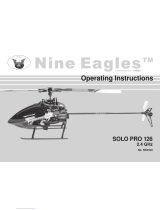 Nine Eagles SOLO PRO 126 Operating Instructions Manual
Nine Eagles SOLO PRO 126 Operating Instructions Manual
-
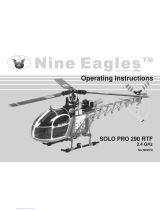 Nine Eagles SOLO PRO 290 Operating Instructions Manual
Nine Eagles SOLO PRO 290 Operating Instructions Manual
-
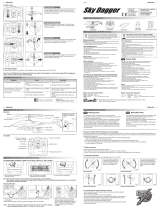 Silverlit Toys Manufactory OYK-TX0002G4-1203 User manual
Silverlit Toys Manufactory OYK-TX0002G4-1203 User manual
-
INTERACTIVE TOY CONCEPTS QE8610XXTX49A User manual
-
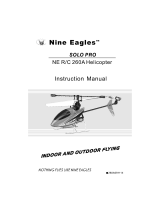 Nine Eagles SOLO PRO NE 260A User manual
Nine Eagles SOLO PRO NE 260A User manual
-
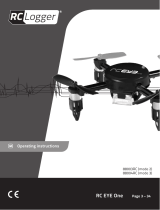 RC Logger RC EYE One Operating Instructions Manual
RC Logger RC EYE One Operating Instructions Manual
-
Syma S-8G User manual
-
Prime MQ4D User manual
-
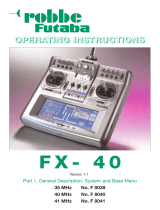 ROBBE FUTABA FX-40 Owner's manual
ROBBE FUTABA FX-40 Owner's manual
-
Futaba T18MZ User manual

























